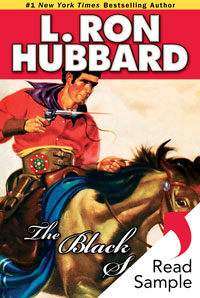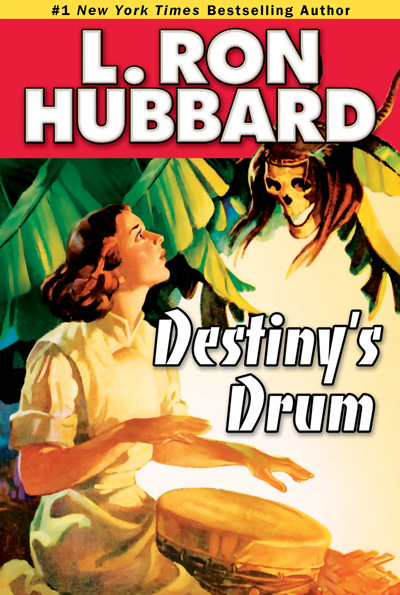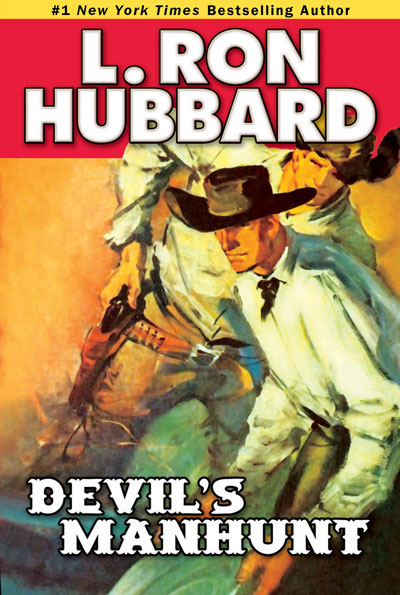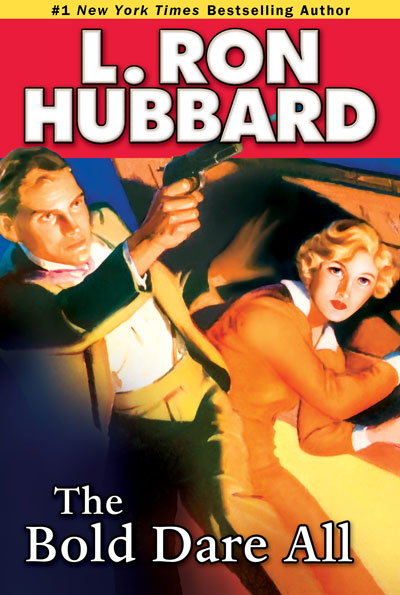Meet Eddie Moran, a slightly disreputable American cooling his heels in French Morocco. He’s as smooth as they come, one step ahead of the game … and of the police.
Who’s after him? Just about everybody. What’s he done? A bit of everything—smuggler, revolutionary, whatever crooked little scheme will pay for his next meal or next drink. But Eddie’s latest caper is one he may not be able to escape … even if he wants to.
Stumbling into a fight between a couple of Berber chieftains, Eddie lands in a prison run by The Black Sultan. He may be a captive of the Sultan, but he’s captivated by a stunning young woman the Sultan means to add to his harem. For her, Eddie might just go straight—if he can get them out of this hellhole alive.
Also includes the adventure story, “Escape for Three,” in which a bold trio of French Legionnaires come to the rescue of their great leader—only to decide he may not be so great after all.
“Action, strong characters, suspense, snappy dialogue, and titillating romance.” —Publishers Weekly
SAMPLE

ABOUT THE AUTHOR
When The Black Sultan was originally published, L. Ron Hubbard said that writers too often “forget a great deal of the languorous quality which made The Arabian Nights so pleasing. Jewels, beautiful women, towering cities filled with mysterious shadows, sultans equally handy with robes of honor and the beheading sword. These things still exist, undimmed, losing no luster to the permeating Occidental flavor which reaches even the far corners of the earth today.” Hubbard brings this unique insight to his stories of North Africa and the Legionnaires, investing them with an authenticity of time, place and character that kept his readers asking for more.
The Black Sultan Glossary
Stories from the Golden Age reflect the words and expressions used in the 1930s and 1940s, adding unique flavor and authenticity to the tales. While a character’s speech may often reflect regional origins, it also can convey attitudes common in the day. So that readers can better grasp such cultural and historical terms, uncommon words or expressions of the era, the following glossary has been provided.
Annamite: of Annam, a French protectorate encompassing the central region of Vietnam. The region was seized by the French and became part of French Indochina in 1887. It regained its independence in1945.
AVB rifle grenade: anti-personnel VB (for Viven-Bessières, the French company that made it) rifle grenade; a form of grenade that utilizes a rifle as a launch mechanism to increase the effective range of the grenade.
barbs: a breed of horses introduced by the Moors (Muslim people of mixed Berber and Arab descent) that resemble Arabian horses and are known for their speed and endurance.
Berber: a member of a people living in North Africa, primarily Muslim, living in settled or nomadic tribes between the Sahara and Mediterranean Sea and between Egypt and the Atlantic Ocean.
bleu: (French) a new recruit; newcomer.
boots: Marine or Navy recruits in basic training.
Browning: a .30- or .50-caliber automatic belt-fed, air-cooled or water-cooled machine gun capable of firing ammunition at a rate of more than 500 rounds per minute.
burg: city or town.
cacolet: (French) a horse or mule litter for the transport of wounded.
cacos: (French) loosely knit bandit organizations who hired out to the highest bidder. The transfer of power in Haiti traditionally occurred when a political contender raised a caco army and marched on the capital. The transfer was completed when the incumbent fled the country with part of the treasury.
cantle: the raised back part of a saddle for a horse.
Cap-Haïtien: a main city on the north coast of Haiti facing the Atlantic Ocean.
carbine: a short light rifle; originally used by soldiers on horseback.
Casablanca: a seaport on the Atlantic coast of Morocco.
concha: a disk, traditionally of hammered silver and resembling a shell or flower, used as a decoration piece on belts, harnesses, etc.
cop: to steal something, especially by snatching it hurriedly.
corrugated ellipsoid: an oval shape with parallel and alternating ridges and grooves; grenade.
coup de soleil: (French) sunburn.
crosstree: the raised wooden pieces at the front and rear of the saddle that form a high pommel or horn in the front and cantle in the back.
djellaba: a long loose hooded garment with full sleeves, worn especially in Muslim countries.
dum-dum: a bullet with a soft front that increases in size when it hits its target, causing serious injuries.
Fez: the former capital of several dynasties and one of the holiest places in Morocco; it has kept its religious primacy through the ages.
flintlock: a type of gun fired by a spark from a flint (rock used with steel to produce an igniting spark). It was introduced about 1630.
forty-five or .45: a handgun chambered to fire a .45-caliber cartridge and that utilizes the recoil or part of the force of the explosive to eject the spent cartridge shell, introduce a new cartridge, cock the arm and fire it repeatedly.
.45 Colt: a .45-caliber automatic pistol manufactured by the Colt Firearms Company of Hartford, Connecticut. Colt was founded by Samuel Colt (1814–1862), who revolutionized the firearms industry.
Franzawi: (Arabic) Frenchman.
French Foreign Legion: a unique elite unit within the French Army established in 1831. It was created as a unit for foreign volunteers and was primarily used to protect and expand the French colonial empire during the nineteenth century, but has also taken part in all of France’s wars with other European powers. It is known to be an elite military unit whose training focuses not only on traditional military skills, but also on the building of a strong esprit de corps amongst members. As its men come from different countries with different cultures, this is a widely accepted solution to strengthen them enough to work as a team. Training is often not only physically hard with brutal training methods, but also extremely stressful with high rates of desertion.
French Indochina: part of the French colonial empire in Indochina, a region in southeast Asia, east of India and south of China.
Frogs: Frenchmen.
Gendarmerie d’Haiti: (French) police force of Haiti. Organized in 1916, and initially consisting of 250 officers and 2,500 men, their purpose was to provide police services throughout the country. The gendarmerie was officered by Marine Corps personnel, most of whom were sergeants with officer rank in the Haitian service. The gendarmerie fought alongside Marine occupying forces during the caco wars.
G-men: government men; agents of the Federal Bureau of Investigation.
Haitian: of Haiti, country in the Caribbean occupying the western part of the island of Hispaniola. The other half is occupied by the Dominican Republic.
Hamitic: of or relating to the Hamites, African people of Caucasoid descent believed to be the original settlers of northern Africa from Asia.
heliograph: a device for signaling by means of a movable mirror that reflects beams of light, especially sunlight, to a distance.
High Atlas: portion of the Atlas Mountain range that rises in the west at the Atlantic coast and stretches in an eastern direction to the Moroccan-Algerian border.
Hotchkiss: a heavy machine gun designed and manufactured by the Hotchkiss Company in France from the late 1920s until World War II. The machine gun is named for Benjamin B. Hotchkiss (1826–1885), one of the leading American weapons engineers of his day, who established the company in 1867.
ifrīt: (Arabic) a powerful evil jinnī, demon or monstrous giant in Arabic mythology.
illahu: (Arabic) al illahu; the (one) God.
Imaziren: an indigenous people of Morocco who are Berbers and who call themselves Imaziren (free-men).
jinnī or jinn: (Arabic) jinnī singular, jinn plural; in Muslim legend, a spirit often capable of assuming human or animal form and exercising supernatural influence over people.
kasbah: a castle built on a high place to defend a North African city.
la belle Légion: (French) the lovely Legion.
Lebel: a French rifle that was adopted as a standard infantry weapon in 1887 and remained in official service until after World War II.
legation: the official headquarters of a diplomatic minister.
Legion: French Foreign Legion.
Legionnaire: a member of the French Foreign Legion.
limned: outlined in clear detail; delineated.
Magat: a river on the largest island of the Philippines.
Mannlicher: a type of rifle equipped with a manually operated sliding bolt for loading cartridges as opposed to the more common rotating bolt of other rifles. Mannlicher rifles were considered reasonably strong and accurate.
Marabouts: spiritual leaders in the Islamic faith, especially in Africa. They are scholars of the Koran and many make amulets for good luck, preside at various ceremonies and in some cases actively guide the life of the follower.
martinet: a rigid military disciplinarian.
mon ami: (French) my friend.
mon lieutenant: (French) my lieutenant.
Monsieur: (French) Mr.
Moorish: of the Moors, Muslim people of mixed Berber and Arab descent.
Moroccan: of Morocco, a country in North Africa. It has a coast on the Atlantic Ocean that reaches past the Strait of Gibraltar into the Mediterranean Sea.
mountain rifle: a very long, ruggedly built rifle designed for use in mountainous terrain.
musette: a small canvas or leather bag with a shoulder strap, as one used by soldiers or travelers.
OD: (military) olive drab.
offal: refuse; rubbish.
parapet: a wall, rampart or elevation of earth for covering soldiers from an enemy’s fire.
pith helmet: a lightweight hat made from dried pith, the soft spongelike tissue in the stems of most flowering plants. Pith helmets are worn in tropical countries for protection from the sun.
present arms: a position in which a long gun, such as a rifle, is held perpendicularly in front of the center of the body.
Qu’est-ce que c’est?: (French) What is that?
rowels: the small spiked revolving wheels on the ends of spurs, which are attached to the heels of a rider’s boots and used to nudge a horse into going faster.
run-over: of boots, where the heel is so unevenly worn on the outside that the back of the boot starts to lean to one side and does not sit straight above the heel.
salāt: (Arabic) a ritual Muslim prayer made five times a day (dawn, midday, afternoon, evening and night) in a standing position, alternating with inclinations and prostrations, as the worshiper faces toward Mecca.
Scheherazade: the female narrator of The Arabian Nights, who during one thousand and one adventurous nights saved her life by entertaining her husband, the king, with stories.
scimitar: a curved, single-edged sword of Oriental origin.
Shaitan: (Arabic) Satan.
Shilha: the Berber dialect spoken in the mountains of southern Morocco.
Snider: a rifle formerly used in the British service. It was invented by American Jacob Snider in the mid-1800s. The Snider was a breech-loading rifle, derived from its muzzle-loading predecessor called the Enfield.
sorrel: a horse with a reddish-brown coat.
Spahis: light cavalry regiments of the French Army recruited primarily from Algeria, Tunisia and Morocco.
Springfield: any of several types of rifle, named after Springfield, Massachusetts, the site of a federal armory that made the rifles.
tramp: a freight vessel that does not run regularly between fixed ports, but takes a cargo wherever shippers desire.
trick soldier: a soldier who, in the convention of military dress and duties, is conspicuously smart, attractive, effective or able.
vizier: a high officer in a Muslim government.
Wagon-Lit: name of a hotel. Wagon-Lit means “sleeping car” in French. Sleeping compartments on trains were first introduced by Georges Nagelmackers in 1872 to service international railroad travelers on trains such as the Orient Express. The original company, Campaignie Internationale des Wagons-Lits, later expanded into hotels.
Webley: Webley and Scott handgun; an arms manufacturer based in England that produced handguns from 1834. Webley is famous for the revolvers and automatic pistols it supplied to the British Empire’s military from 1887 through both World War I and World War II.
wudu’: (Arabic) a Muslim cleansing ritual involving cleaning with water of the hands, face, mouth and feet (and perhaps other parts of the body), which is a symbol of spiritual cleansing. Usually practiced before salāt.
Yank: Yankee; term used to refer to Americans in general.
Zouave: a member of a French infantry unit, originally composed of Algerian recruits and characterized by colorful uniforms with baggy trousers.












